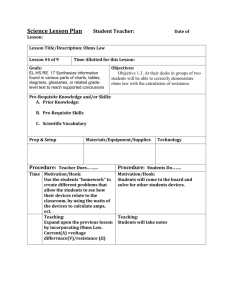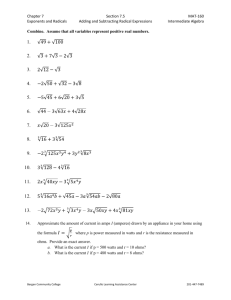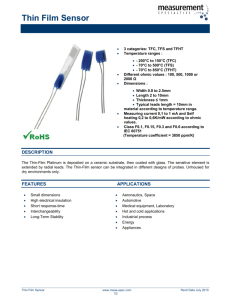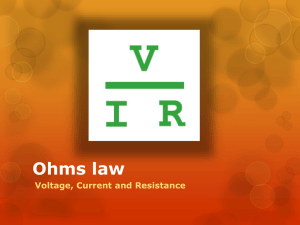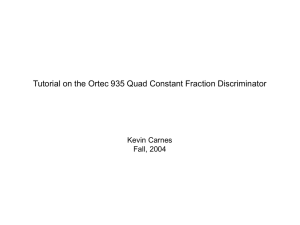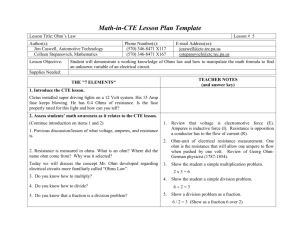CONCLUSION FOR RESISTANCE AND OHM'S LAW LAB
advertisement
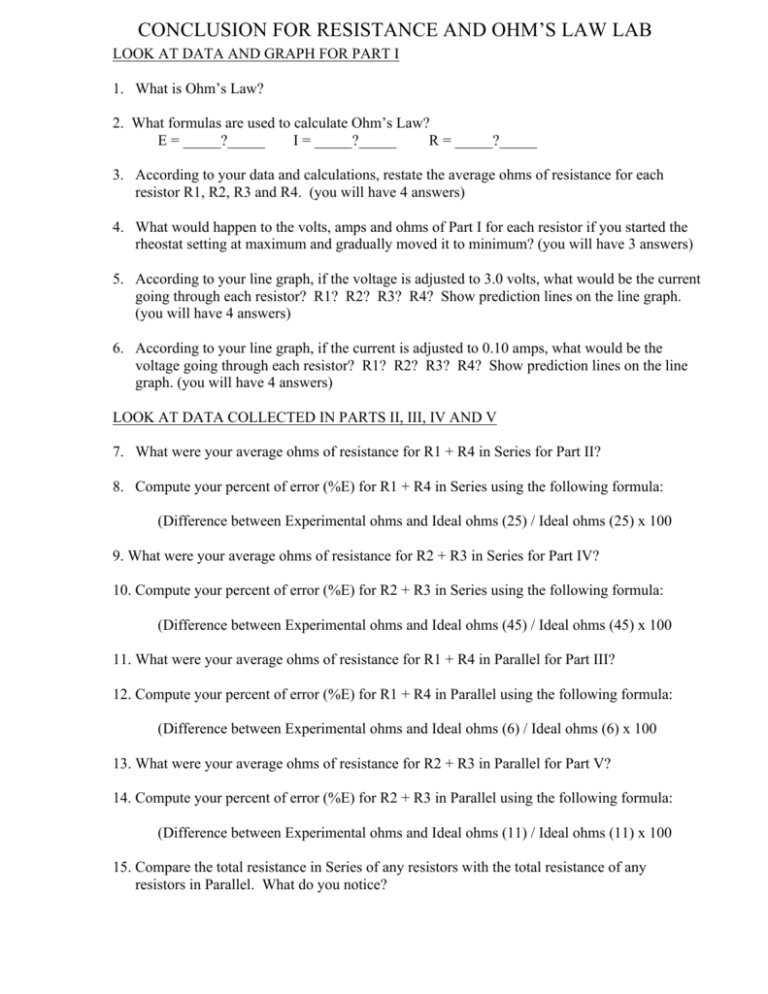
CONCLUSION FOR RESISTANCE AND OHM’S LAW LAB LOOK AT DATA AND GRAPH FOR PART I 1. What is Ohm’s Law? 2. What formulas are used to calculate Ohm’s Law? E = _____?_____ I = _____?_____ R = _____?_____ 3. According to your data and calculations, restate the average ohms of resistance for each resistor R1, R2, R3 and R4. (you will have 4 answers) 4. What would happen to the volts, amps and ohms of Part I for each resistor if you started the rheostat setting at maximum and gradually moved it to minimum? (you will have 3 answers) 5. According to your line graph, if the voltage is adjusted to 3.0 volts, what would be the current going through each resistor? R1? R2? R3? R4? Show prediction lines on the line graph. (you will have 4 answers) 6. According to your line graph, if the current is adjusted to 0.10 amps, what would be the voltage going through each resistor? R1? R2? R3? R4? Show prediction lines on the line graph. (you will have 4 answers) LOOK AT DATA COLLECTED IN PARTS II, III, IV AND V 7. What were your average ohms of resistance for R1 + R4 in Series for Part II? 8. Compute your percent of error (%E) for R1 + R4 in Series using the following formula: (Difference between Experimental ohms and Ideal ohms (25) / Ideal ohms (25) x 100 9. What were your average ohms of resistance for R2 + R3 in Series for Part IV? 10. Compute your percent of error (%E) for R2 + R3 in Series using the following formula: (Difference between Experimental ohms and Ideal ohms (45) / Ideal ohms (45) x 100 11. What were your average ohms of resistance for R1 + R4 in Parallel for Part III? 12. Compute your percent of error (%E) for R1 + R4 in Parallel using the following formula: (Difference between Experimental ohms and Ideal ohms (6) / Ideal ohms (6) x 100 13. What were your average ohms of resistance for R2 + R3 in Parallel for Part V? 14. Compute your percent of error (%E) for R2 + R3 in Parallel using the following formula: (Difference between Experimental ohms and Ideal ohms (11) / Ideal ohms (11) x 100 15. Compare the total resistance in Series of any resistors with the total resistance of any resistors in Parallel. What do you notice?
